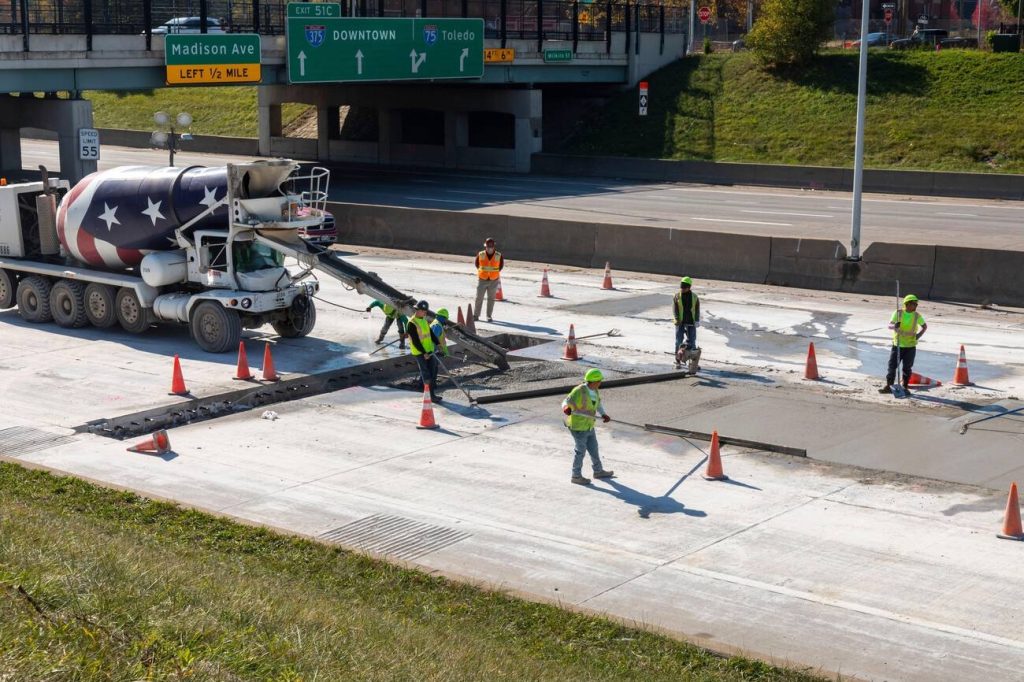Concrete is one of the most durable materials in the world, widely used in driveways, sidewalks, and foundations. But even the strongest materials can degrade over time, and concrete is no exception. Whether it’s due to weather changes, heavy loads, or natural wear and tear, cracks and breaks will eventually form, leading to more serious problems if not properly addressed. In this comprehensive guide, we’ll show you how to tackle broken and cracked concrete repair and bring your surfaces back to life.
Why Does Concrete Crack?
Before diving into how to fix it, let’s understand why concrete cracks. Most commonly, temperature changes cause the material to expand and contract, creating tension that leads to cracking. Other causes include:
- Overloading: Heavy vehicles or equipment placed on a concrete slab can cause stress and result in cracks.
- Poor installation: Improper mixing, curing, or insufficient reinforcement can weaken the concrete over time.
- Ground movement: Soil shifting beneath the surface can lead to uneven settling and cracks.
- Water infiltration: Water seeping into concrete can freeze during cold months, expanding and causing cracks.
Understanding these causes helps prevent future damage, but for now, let’s focus on repairing broken and cracked concrete.
How to Repair Small Cracks in Concrete
For minor cracks, early intervention is key. Small cracks not only spoil the look of your concrete but can also allow moisture to enter, which eventually worsens the situation. Here’s a simple guide to repairing these cracks:
- Clean the area: Before applying any filler, make sure the crack is free from dust, dirt, and loose concrete. Use a wire brush or vacuum cleaner to remove debris.
- Apply concrete filler: Purchase a ready-mix concrete filler from your local hardware store. Squeeze or spread the filler into the crack, making sure it’s packed tightly.
- Smooth the surface: Use a trowel to smooth the surface of the filler so it blends seamlessly with the surrounding concrete.
- Let it dry: Allow the filler to dry completely as per the manufacturer’s instructions, typically 24 hours.
- Seal the repair: Once dry, apply a concrete sealer to protect the surface from future moisture damage.
Repairing Large Cracks and Broken Concrete
When dealing with larger cracks or broken chunks of concrete, the process becomes more complex. Here’s a step-by-step approach to tackling larger-scale damage:
1. Assess the Damage
If the crack is wider than 1/4 inch or if the concrete is completely broken, simple filler may not be enough. You’ll need to remove the damaged section and fill it with new concrete.
2. Remove Loose Concrete
Use a hammer and chisel to break away loose or crumbling concrete. Clear out any debris to ensure a clean working area.
3. Apply a Bonding Agent
To help the new concrete adhere to the old surface, use a concrete bonding adhesive. Apply the bonding agent to the cracked area, following the product’s instructions.
4. Mix and Apply New Concrete
Mix a batch of fresh concrete following the manufacturer’s guidelines. Fill the crack or hole with the wet concrete, ensuring it’s level with the surrounding surface. Use a trowel to smooth out the new concrete.
5. Cure and Seal
Allow the newly repaired concrete to cure as directed (typically several days). Once fully cured, apply a sealer to protect against water damage, future cracks, and stains.
Preventing Future Cracks in Concrete
Prevention is better than cure, and the same goes for concrete cracks. While you can’t prevent every crack, taking a few proactive steps can significantly extend the life of your concrete surfaces:
- Use control joints: When pouring new concrete, install control joints to help guide cracking.
- Seal your concrete regularly: A good concrete sealer will protect against water penetration, which is a leading cause of cracks.
- Address drainage issues: Ensure that water is draining away from your concrete surfaces to prevent water from pooling and seeping into the concrete.
- Limit heavy loads: Avoid parking heavy vehicles or equipment on the concrete surface if possible.
- Schedule routine maintenance: Regularly inspect your concrete for signs of wear and address small cracks before they become bigger problems.
Why Professional Concrete Repair Is Worth It
While DIY concrete repair can handle minor issues, large cracks and broken sections require professional attention. Attempting a large-scale fix without the right tools or expertise can lead to further damage down the road. Professional concrete contractors have the equipment and knowledge to make repairs that are both long-lasting and aesthetically pleasing.
When Should You Call a Professional?
There are times when a DIY approach just isn’t enough. Call a professional if:
- The cracks are deep and wide.
- Large sections of concrete are missing or broken.
- You’re dealing with foundation or structural issues.
- The concrete damage is the result of improper installation or significant ground movement.
When your concrete needs expert attention, it’s important to hire a reputable company that specializes in broken and cracked concrete repair. They’ll have the tools and knowledge to restore your surfaces and ensure they last for years to come.
Need Expert Concrete Repair? Contact Us Today!
If you’re dealing with broken or cracked concrete and need expert help, don’t hesitate to reach out to SK Group NYC Corp. We understand how frustrating it can be to see your beautiful home marred by damaged concrete, and we’re here to fix that. Our team specializes in concrete repair, ensuring that your surfaces are not only safe and structurally sound but also regain their beauty.
Whether it’s a small crack that needs attention or a large section that requires replacement, our experienced professionals are ready to step in. We know how much your home means to you, and we treat every project with the care it deserves.
Contact SK Group NYC Corp today for a free consultation, and let us help you restore your concrete to its best condition. Your home deserves nothing less than excellence, and we’re here to deliver that.

